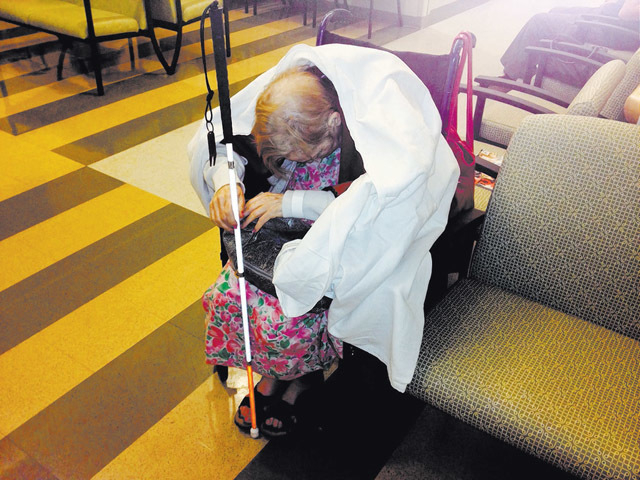EDITORIAL: Reform the VA

It’s easy to say the United States is all about supporting its veterans, the people who served and sacrificed to protect Americans’ freedoms. And for government, it’s easy to spend buckets of money and then some as proof of support for veterans.
What’s not easy, though, is actually proving that support is there, actually caring for veterans when they need it most — when they are sick, incapacitated or otherwise in need of medical attention. This problem was brought to light once again in Southern Nevada with the case of 78-year-old Sandi Niccum, who died Nov. 15 at a local hospice.
As reported Nov. 28 by the Review-Journal’s Keith Rogers, Ms. Niccum endured a six-hour emergency room wait Oct. 22 at the Veterans Affairs Medical Center in North Las Vegas. Her friend, Dee Redwine, documented the entire ordeal of the blind, diabetic Navy veteran. “Several times, she would just beat (her walking cane) on the floor and say, ‘Please somebody help me.’ But they didn’t. Nobody cared.”
Ms. Niccum, who endured a similar ordeal late last summer with a four-hour wait to be admitted, arrived at the VA hospital at 3:40 p.m., checked in at the center’s emergency room shortly after 4 p.m., but wasn’t called by the ER doctor until about 9:30 p.m. Mr. Rogers reported that because of a data-entry error, Ms. Niccum couldn’t get a pain pill and was instead instructed to go home and return early the next morning to get X-rays. But Ms. Niccum was physically spent and couldn’t return until two days later.
This sparkling new hospital opened in August 2012 at a cost of about $1 billion to taxpayers — despite the fact that it had no land costs because it was built on federal acreage. Review-Journal columnist Glenn Cook noted last year upon the hospital’s opening that it took six years to finish, with construction costs soaring beyond a $286 million estimate. Yet over the previous decade, Mr. Cook wrote, four new private-sector hospitals opened in the valley at a total cost — including paying for land — of $468 million. Those four hospitals added more than 600 beds, three times the number of beds at the new VA hospital — at less than half the cost.
And therein lies the solution for all veterans: the private sector. To be fair, there are plenty of documented instances of private and public hospitals making similar mistakes in the diagnosis and treatment of patients. But Ms. Niccum came to the VA hospital for care because she was a veteran. This hospital was built for her — and she got nothing. As Mr. Rogers reported Wednesday, countless other veterans get the same sit-and-wait treatment regardless of their condition.
The VA practically cries out for reform. Veterans should be able to get care anywhere. It’s time to provide them with private-sector health plans or vouchers for use at any doctor’s office or hospital, so they can shop for the best possible treatments and outcomes. Billion-dollar taxpayer outlays on shiny new buildings clearly aren’t doing the job.












